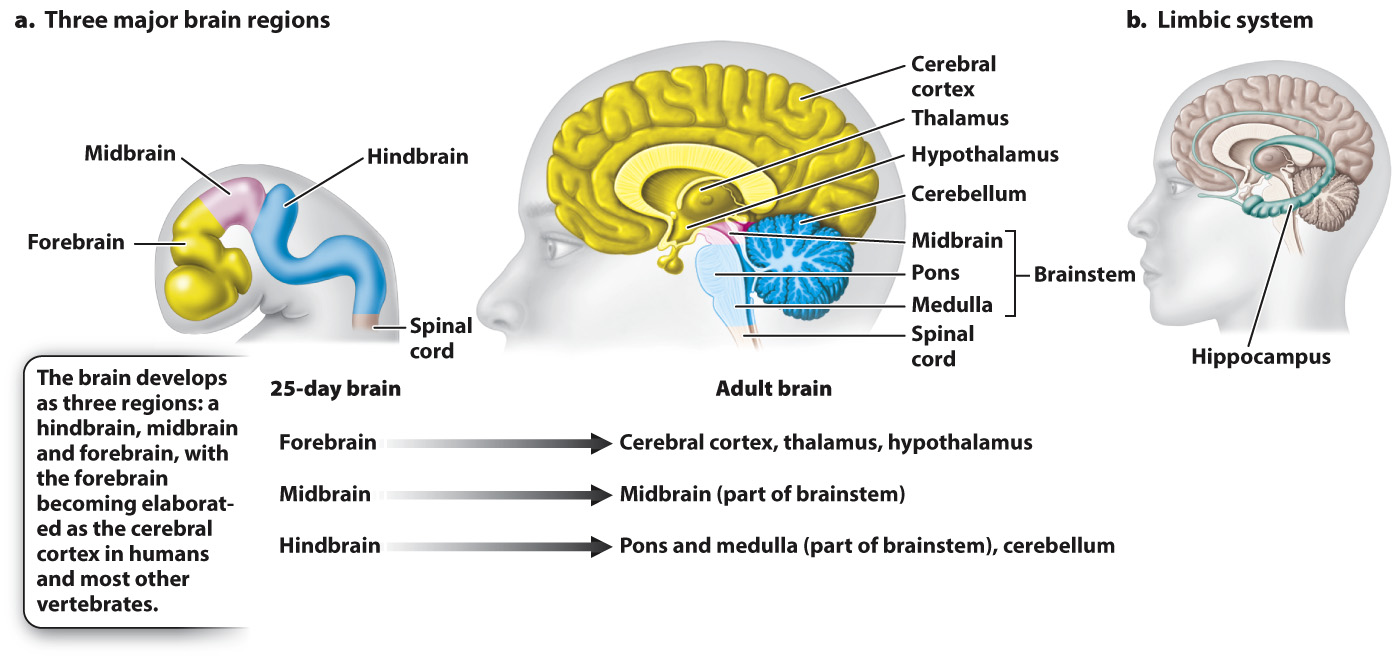The brain processes and integrates information received from different sensory systems.
With the evolution of greater cognitive ability, animal brains became larger and more complex. Different brain regions became specialized to carry out different functions. The vertebrate brain is organized into a hindbrain, midbrain, and forebrain, with a cerebral cortex formed from a portion of the forebrain (Fig. 36.22a). The hindbrain and midbrain control basic body functions and behaviors, and the forebrain, particularly the cerebral cortex, governs more advanced cognitive functions. The cerebral cortex of mammals—

In adult vertebrates, the hindbrain develops into the cerebellum and a portion of the brainstem (Fig. 36.22a). The remainder of the brainstem develops from the midbrain. The cerebellum coordinates complex motor tasks, such as catching a ball or writing. It integrates both motor and sensory information. The brainstem, consisting of the medulla, pons, and midbrain, initiates and regulates motor functions such as walking and controlling posture, and coordinates breathing and swallowing. The brainstem activates the forebrain by relaying information from lower spinal levels. High levels of activity within the brainstem maintain a wakeful state; low levels enable sleep. If the midbrain is damaged, loss of consciousness and then coma result.
778
The forebrain consists of an inner brain region that forms the thalamus and the underlying hypothalamus, and a more anterior region that develops into the cerebrum, the outer left and right hemispheres of the cerebral cortex (Fig. 36.22a). The thalamus is a central relay station for sensory information sent to higher brain centers of the cerebrum. The hypothalamus interacts closely with the autonomic and endocrine systems to regulate the general physiological state of the body. In humans and most other primates, the cerebral cortex is the largest part of the brain, overseeing sensory perception, memory, and learning. Whereas the forebrain is essential to normal behavior in mammals, it appears less important for other vertebrates.
Other inner components of the forebrain constitute the limbic system, which controls physiological drives, instincts, emotions, and motivation and, through interactions with midbrain regions, the sense of reward (Fig. 36.22b). Stimulation of the limbic system can induce strong sensations of pleasure, pain, or rage. A posterior region of the limbic system, the hippocampus, is involved in long-
Sensory information reaches the cerebral cortex from the cranial nerves and nerves passing through the spinal cord. This information passes through the brainstem, and then through the thalamus, the central relay station for sensory information. From the thalamus, information for each of the senses goes to a different region of the brain specialized to further process that information, in a manner discussed next.